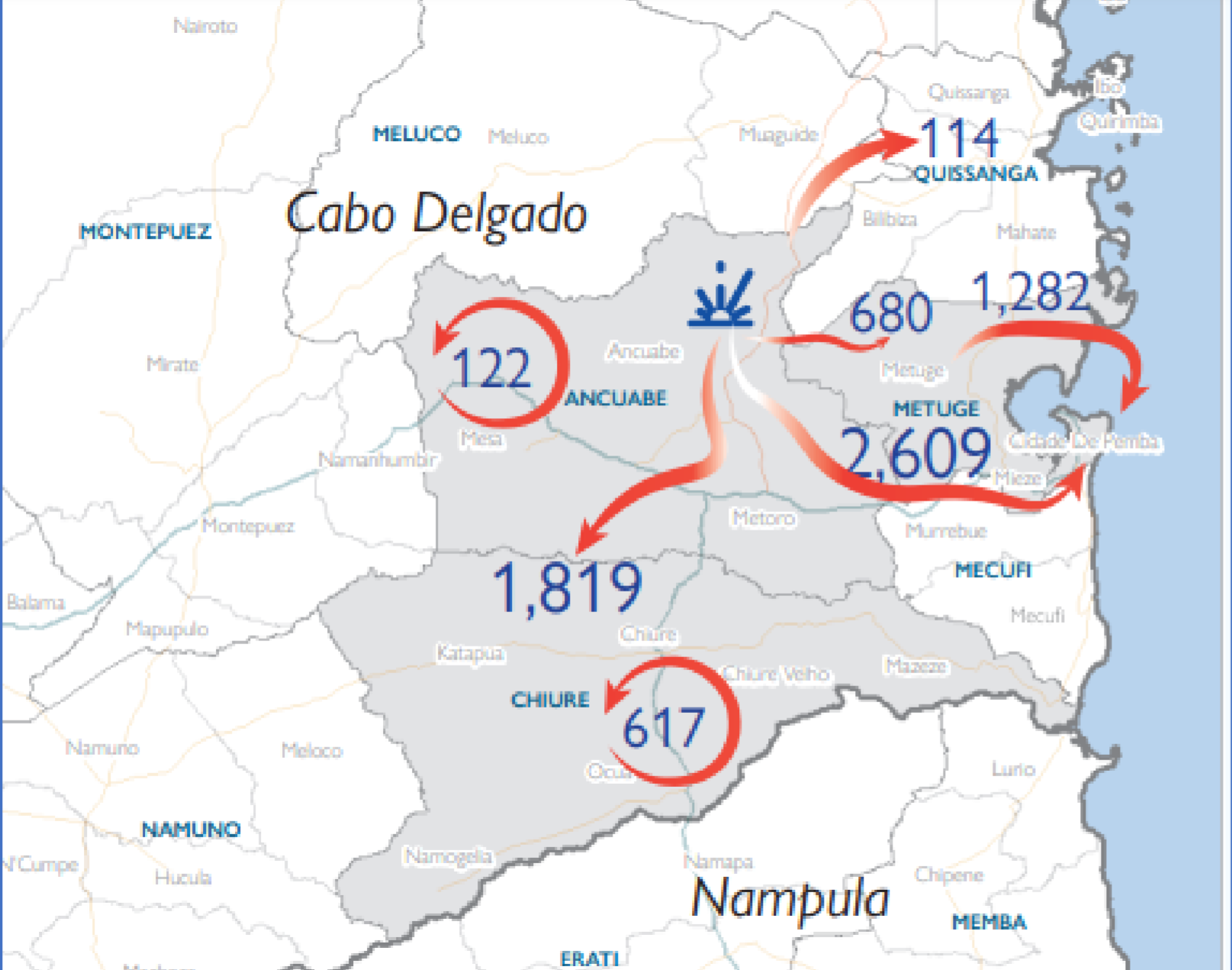At least 11,737 civilians fled their homes in southern Cabo Delgado between 2 June and 12 June in the wake of a series of attacks in Ancuabe district, the International Organization for Migration (IOM) has said.
The first reported attack in Ancuabe took place on 5 June, when insurgents raided and burned Nanduli village, triggering a massive population movement across the province. Over half moved into Chiúre district and the city of Pemba, the IOM’s Displacement Tracking Matrix showed on 13 June.
Approximately 414 people were identified with vulnerabilities, the report said, including the elderly, pregnant, disabled and unaccompanied children. IOM estimates that 57% of those displaced are children, with women and men making up 25% and 18% respectively. The majority moved on foot or by bus.
Just under 2,000 of the 11,737 people reported to have been displaced fled their homes following the beheading of two security guards at the Grafex mining project near Ngeue, Ancuabe, on 9 June and the attack on Retene village in Chiúre district on 12 June.
This exodus has also likely been fuelled by rumours of further, so far unconfirmed attacks in Mazeze and Micolene villages in Chiúre, and in Mecufi, the south-eastern-most district in the province.
The IOM’s figures, however, are not definitive and likely underestimate the true number of displaced. While the organisation estimates that around 4,000 refugees from Ancuabe arrived in Chiúre, the United Nations Office for the Coordination of Humanitarian Affairs (OCHA) reports that Chiúre’s local authorities have recorded 7,765 arrivals from Ancuabe.
The OCHA also reports that most of those who fled to Chiúre are living in emergency and communal shelters, and that displaced people across the province are in dire need of food, sanitation kits, and other essential items.
News article produced by Zitamar under the Cabo Ligado project, in collaboration with ACLED and Mediafax. The contents of the article are the sole responsibility of Zitamar News.









